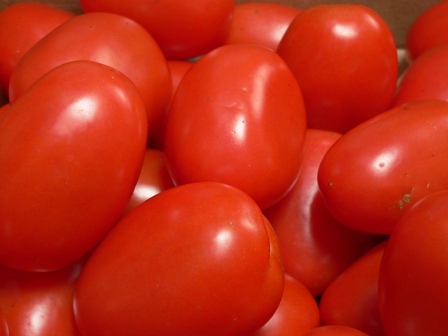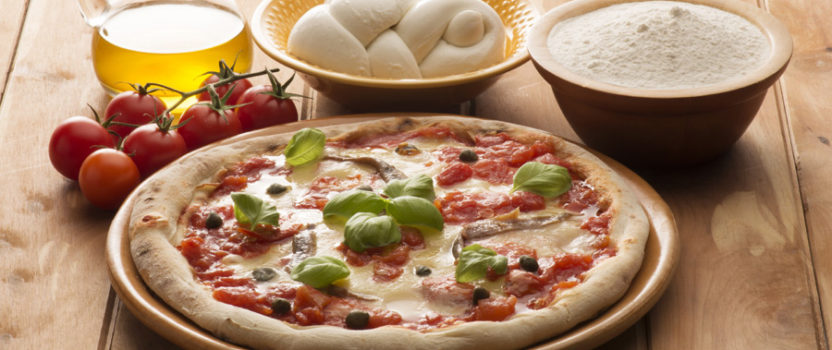Post 3|2016
Live the dream! So said my dear friend SF and she is right but what dream; whose dream? I try to live the dream of a low carbon life because I want to live, and I want those who come after me, not ‘mine’ because there are none, but those of others, to live too. Yesterday I had a glimpse of living the dream.
For the last two years, THS and I have got together with some special friends and three oldies to make huge quantities of passata sauce (you know that gorgeous red stuff that is put with pasta and other delicious things and eaten with happy sighs). This year we got serious. SAR bought 30 plus kilos of roma tomatoes from the Victoria Market (apparently the 2015/16 is an early tomato season; about five weeks early to be precise), we got hold of 40 x 500 ml jars with lids, a neighbor lent us two huge pots and we hired the community hall a couple of doors up the road.
And so the day started. Sadly, two of the three oldies died in 2015. Vale dear Peter and dear Barbara; a generation slipping away. The last of the oldies John, kept up by scoring tomatoes, sitting in the corner and singing, in his gorgeous tenor voice, love songs of before. We made 24 litres of sauce with a combination of borrowed pots, high humidity and shared community facilities. Three households now have enough sauce to go with pasta for six months, if each eats some every week, longer if we choose to be less piggy.
So why is this the dream of a low carbon life? It is surely the dream of any life. Friends, community, sharing spaces, neighborly interest, good food and fine wine. We are fortunate in so many ways. Low carbon living doesn’t have to be a life of denial, of boredom, of poor quality everything. It’s the opposite – the richness of relationships; of collaboration; of loving, careful preparation; of understanding the seasons; of reusing things; of an annual calendar of pleasurable events; of deep connections; the quality of our lives has never been about ‘stuff’; it has always been about people. And so it was for me yesterday – a low carbon life where we made things that we would otherwise buy; where we put the cooking water onto the little trees planted this year around the hall in memory of the local men who died in the first world war; and, where I took home the tomato scraps for composting and hence to improve our soil. A low carbon life; a life of quality.
Interesting Reading
Helping me to understand what a Low Carbon Life might be ….

 This fortnight I have been reading a technical report on what we need to do to retrofit our Australian houses so we can live low carbon lives. The report, Zero Carbon Australia Buildings Plan, was published a bit over two years ago. The work was a collaboration between a University of Melbourne research group and the not-for-profit research and education group called Beyond Zero Emissions. I have read some of the work from this group before and, each time, the same question comes to mind. What do we have to do to make our house, here in rural Victoria, low carbon or better still zero emissions?
This fortnight I have been reading a technical report on what we need to do to retrofit our Australian houses so we can live low carbon lives. The report, Zero Carbon Australia Buildings Plan, was published a bit over two years ago. The work was a collaboration between a University of Melbourne research group and the not-for-profit research and education group called Beyond Zero Emissions. I have read some of the work from this group before and, each time, the same question comes to mind. What do we have to do to make our house, here in rural Victoria, low carbon or better still zero emissions?
I was very interested when I read (p.14) that ‘The Buildings Plan did not aim for buildings to be able to generate as much energy from on-site renewables as they consume, but the outcomes of this research found this is achievable in residences’. OK, we don’t live in a commercial building; ours is a residential building so according to this report, we should be able to retrofit our house and generate the same amount of energy as we consume. What do we have to do? Tell me! Tell me!
I turned to the relevant section (p.123) and I think big numbers and averaging might be distorting the picture, at least as far as our house is concerned so, over the next fortnight, I will put in the effort required to understand and then share what I understand in my next post.
What I can share now, however, is a list of the home based retrofits that are recommended to reduce our carbon footprint. My simplified list is below and it is in, approximately, the researchers’ recommended order:
- insulate roofs to a value of R 6.0 (R values are the measure of insulation effectiveness; the higher the number the better)(I need to check our roof insulation, I don’t think it is up to R 6.0)
- draft proof windows and doors (our are OK except the front door has leaks)
- double glaze windows and make sure there isn’t a ‘thermal bridge’ (a classic ‘thermal bridge’ in double glazed windows is a continuous aluminum frame inside and out; you can tell because on hot days the frame is hot on the inside and on cold days the frame is cold on the inside) (ours are OK)(the image below is the company, Dowell, showing the performance of their various windows with and without thermal breaks shown in the section called frame type)

- no gas appliances – solar hot water or a heat pump instead; induction cook top; high-efficiency electric split system for heating and cooling (or in 2016, one of the new heat pumps that provides hot water for normal use plus hot water for hydronic heating and, I think, cooling)(we still have a gas cook top but have a heat pump and high-efficiency electric split system)
- shading inside and out which means external blinds to the north and west (yes, we have these); pelmets over the top of heavy drapes or close-fitting blinds (yes, we have these)
- light-colored roof paint (we just have the plain galvanized color)
- LEDs for all lighting (in progress)(compact fluros appear to be ‘out’)
- efficient appliances
- energy monitoring (in progress see the ‘projects’ section)
I’m happy with how we are going implementing this list but I am really keen to understand how, with our high winter heating needs, we can generate as much renewable energy as we consume so stay tuned.
Projects
New initiatives leading towards a Low Carbon Life ….
This fortnight I didn’t do any work on any projects! Shame on me; I’m sure I could dredge up an excuse if I tried, but I really can’t be bothered. I’ll be a better person next week I promise!
Incidents
Domestic maintenance leading towards a Low Carbon Life ….
This fortnight I did more work on:
- The Faulty Inverter Incident. Resolution of this incident will be the resumption of solar electricity being available to us in the prime generating time of summer. So far I have learnt to be really, really patient and control my frustration! It now looks like our fourth inverter has failed! Read more ….
- The Range-hood Incident. So far I have learnt that when buying appliances, trying to work out how long they will last might be as important as understanding how much energy they need to operate. Events over the last fortnight make me think I am now close to the end of a lengthy process. Read more ….
Really ….
I read this a couple of weeks ago. The source seems legitimate but really! The climate change hardliners, experts, people who know what they are talking about in relation to global warming say the following is part of the problem. With or without climate change it simply seems wrong.
‘Just 62 people own as much wealth as the poorer half of the global population, a new report reveals, as the widening of the gap between the rich and poor accelerates.
As the business elite converge on Davos for the World Economic Forum, an Oxfam report shows wealth is becoming further concentrated, with the number of people owning the same amount as the bottom half of humanity falling from 388 to 62 in five years.’
Until next time, Jane

